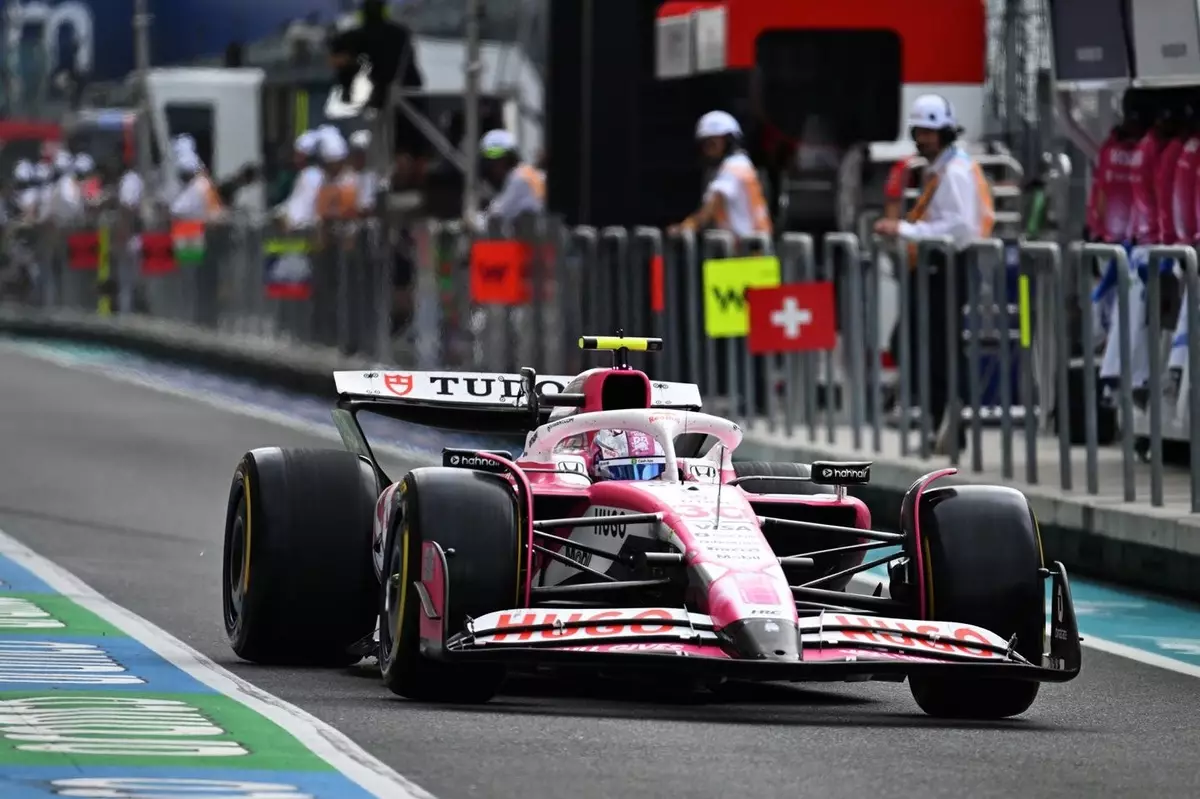As the engines rev up for the Emilia-Romagna Grand Prix, the Racing Bulls Formula 1 team is rolling out a crucial upgrade package, but the team is approaching this with an air of cautious optimism. Unlike a reckless gamble on performance enhancement, the strategy here is deeply rooted in learning from past mistakes. This careful evolution denotes a maturity within the Racing Bulls camp, showcasing a rigorous analytical mindset that is essential in a competition as high-stakes as Formula 1.
Contrary to early assumptions that this might catapult them into an entirely different echelon of performance, team principal Laurent Mekies conveys a more tempered expectation. Racing Bulls is, after all, conscious of the fine line between ambitious upgrades and the potential pitfalls that lie therein. The upgrades consist of a new floor and revised bodywork—the car’s primary aerodynamic surfaces—and represent the team’s inaugural major shift for the 2025 season. However, the past is a ghost that haunts the team, as last season saw them grapple unsuccessfully with a significant Barcelona overhaul that ended up slowing them down.
A Cautious Approach to Development
Mekies’s assertion that the latest upgrades present only a “small step” illustrates the philosophy of gradual improvement that the Racing Bulls have adopted. The reality of Formula 1’s aerodynamic complexities necessitates a meticulous approach, where one misjudged alteration can lead to a cascade of negative effects on overall vehicle dynamics. This recognition of fragility in design speaks volumes about the competitive landscape; small incremental changes can have outsized impacts on performance, especially when the midfield is as tightly packed as it currently is.
Throughout the early season races, Racing Bulls has displayed a mixed performance, securing seven points in the China and Japan races before dwindling to just a single point in Saudi Arabia. This inconsistency places them in an uncomfortable eighth position in the standings, highlighting the competitive nature of the midfield. In such a tight contest, the difference of a mere tenth of a second could lead to wild fluctuations in qualifying positions, making each upgrade profoundly critical.
The Midfield Battle: Risk versus Reward
The realities of racing demand teams to walk a fine line between innovation and reliability. Mekies recognizes that while each tiny performance boost could mean the difference between breaking into Q3 or being stuck in Q1, an overly ambitious redesign could lead to a cascade of failures that could set back the team significantly. Here, the urgency for incremental advancements is balanced with the risk management essential in competitive racing, demonstrating a keen understanding of the intricate mechanics at play.
Mekies’s plan for progressive upgrades from Imola through subsequent races emphasizes a commitment to building a sustainable performance strategy rather than seeking instant gratification through radical changes. His viewpoint—recognizing this challenging equilibrium—reflects a level of maturity that speaks positively for Racing Bulls’ future. Moreover, the looming Barcelona Grand Prix looms large on the horizon as a pivotal point for the team, beckoning them to reevaluate their trajectory and potentially recalibrate their ambitions for the 2026 season.
Future Prospects: The Broader Picture
Amidst the tactical upgrades and cautious analysis, there is a broader narrative unfolding in Formula 1. With the looming prospect of regulatory changes, particularly regarding flexing front wings and their implications for vehicle performance, every team must remain agile and adaptable. Mekies’s commentary suggests that the upcoming races will serve not just as opportunities for performance enhancement but as critical touchpoints for the Racing Bulls to ascertain their strategic focus moving forward.
As the sports world watches through the lens of competitive drama, the Racing Bulls are poised at a fascinating intersection: refining their current vehicle’s capability while keeping an eye on the times ahead, negotiating their aspirations between present obstacles and future landscapes. It is this strategic foresight that positions Racing Bulls not merely as participants but as contenders capable of thriving in the high-stakes arena of Formula 1.

